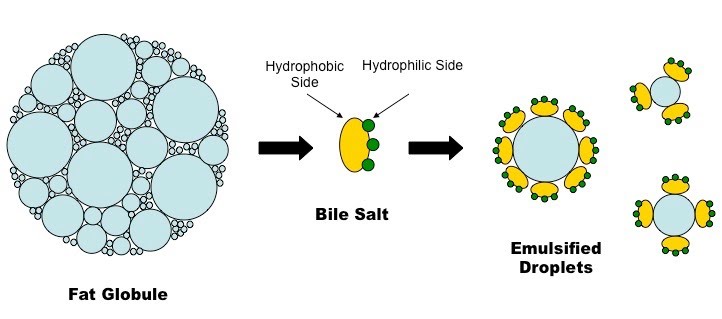Lipids
Proteins

Smaller yet droplets called micelles of both the lipid products as well as the bile salts still hanging onto them come into contact with the brush border. They are then absorbed in the intestine by simple diffusion into the epithelial cell, however there are also specific fatty acid transporters to help them cross the membrane.
Fatty acids convert into acetyl coenzyme A following beta-oxidation reactions and enter respiration at the Krebs cycle step. Glycerol is converted into one of the glycolysis intermediates, thus entering the respiration pathway.
Proteins
Proteins, too, need to be broken down in multiple steps. The first involves enzymes like endopeptidases and exopeptidases secreted by the pancreas. They break down long amino acid chains, polypeptides, into smaller ones like dipeptides. Endopeptidases break peptide bonds between amino acids, while exopeptidases break the peptide bonds of amino acids with terminal amino or carboxy groups either end of a polypeptide…

